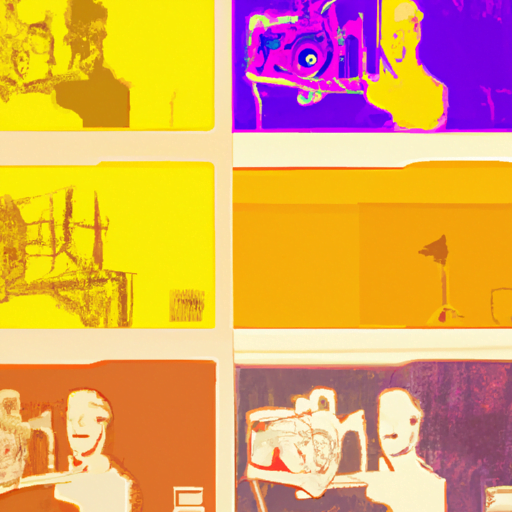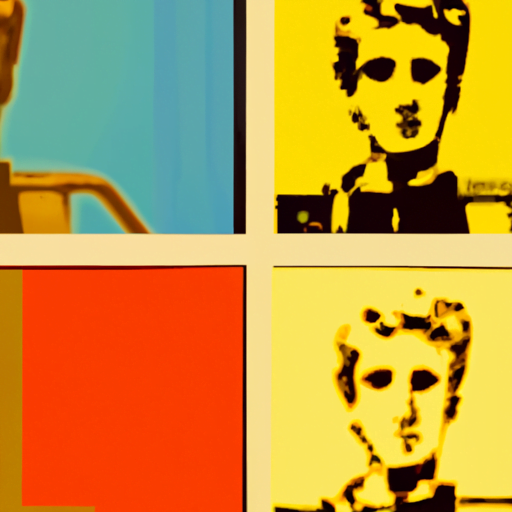
-
Table of Contents
AI in Illustration: From Concept Sketches to Final Art

Artificial Intelligence (AI) has revolutionized various industries, and the world of illustration is no exception. With advancements in machine learning and deep learning algorithms, AI has become a powerful tool for artists and designers. From generating concept sketches to creating final artwork, AI is transforming the way illustrations are created. In this article, we will explore the impact of AI in illustration and how it is reshaping the creative process.
The Rise of AI in Illustration
AI has made significant strides in recent years, enabling machines to understand and replicate human creativity. In the field of illustration, AI algorithms can analyze vast amounts of visual data, learn from it, and generate new artwork based on the learned patterns. This has opened up new possibilities for artists and designers, allowing them to explore innovative techniques and styles.
One of the key areas where AI has made a significant impact is in generating concept sketches. Traditionally, artists would spend hours sketching and refining their ideas on paper or using digital tools. However, AI-powered software can now generate concept sketches based on a few simple inputs from the artist. For example, Adobe’s Sensei AI can transform rough doodles into detailed sketches, providing artists with a starting point for their illustrations.
Enhancing the Creative Process
AI is not replacing artists; instead, it is enhancing their creative process. By automating certain tasks, AI allows artists to focus more on the artistic aspects of their work. For instance, AI algorithms can assist in color selection, composition, and even suggest alternative design options. This not only saves time but also provides artists with new perspectives and ideas.
Moreover, AI can analyze large datasets of existing artwork and identify patterns and trends. This can be particularly useful for artists who want to create illustrations that resonate with specific target audiences. By understanding the preferences and tastes of different demographics, AI can help artists tailor their illustrations to better connect with their intended viewers.
Case Studies: AI in Illustration
Several companies and artists have already embraced AI in their illustration workflows, showcasing its potential in the industry. Let’s explore a few notable case studies:
1. The Next Rembrandt
In 2016, a team of data scientists and art historians collaborated to create a new painting in the style of Rembrandt, one of the greatest Dutch painters. Using AI algorithms, they analyzed Rembrandt’s existing works, including brushstrokes, color palettes, and subject matter. The AI then generated a new painting that closely resembled Rembrandt’s style. This project demonstrated how AI can replicate the techniques and aesthetics of renowned artists.
2. Google’s DeepDream
DeepDream is an AI-powered image recognition system developed by Google. While initially designed for image classification, it gained popularity among artists for its ability to generate surreal and dream-like images. Artists started using DeepDream to transform their illustrations into unique and visually captivating artworks. This showcases how AI can inspire artists to explore new creative directions.
3. NVIDIA’s GauGAN
GauGAN, developed by NVIDIA, is an AI-powered tool that turns simple sketches into realistic landscapes. Artists can draw rough outlines of objects and use GauGAN to generate detailed and visually stunning scenes. This tool not only speeds up the illustration process but also allows artists to experiment with different compositions and styles effortlessly.
The Future of AI in Illustration
As AI continues to evolve, its impact on the field of illustration is expected to grow even further. Here are some potential future developments:
- Improved Style Transfer: AI algorithms can already transfer the style of one artwork onto another. In the future, we can expect more advanced algorithms that can accurately replicate the style of any artist or art movement.
- Real-Time Collaboration: AI-powered tools can enable artists to collaborate in real-time, regardless of their physical location. This can revolutionize the way illustrations are created, allowing artists to work together seamlessly.
- Personalized Art Recommendations: AI algorithms can analyze an individual’s preferences and recommend artwork that aligns with their tastes. This can help artists reach a wider audience and create illustrations that resonate with specific individuals.
Conclusion
AI has become an invaluable tool for artists and designers in the field of illustration. From generating concept sketches to creating final artwork, AI algorithms are transforming the creative process. By automating certain tasks and providing new perspectives, AI enhances artists’ abilities and opens up new possibilities. As AI continues to advance, we can expect even more exciting developments in the world of AI-powered illustration.
